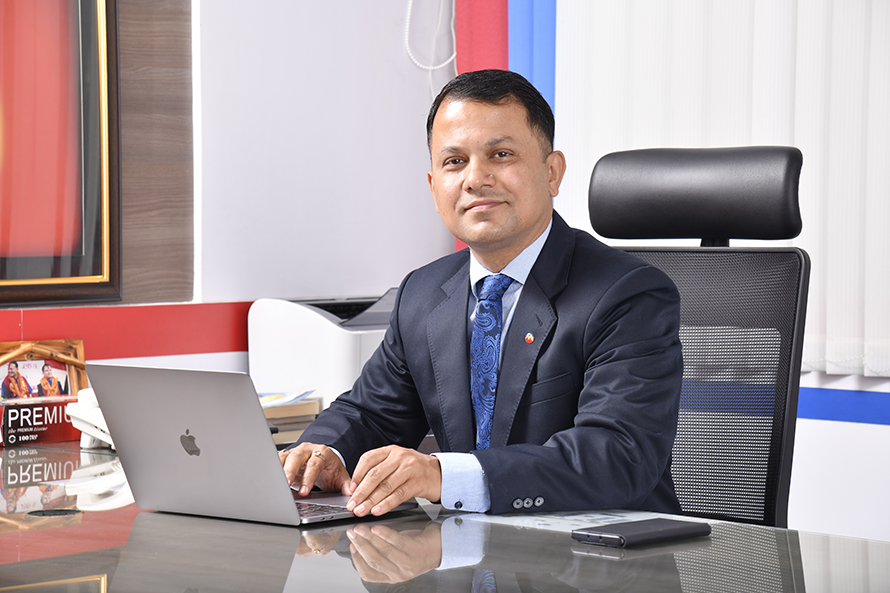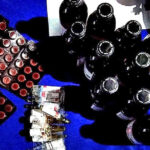by Karuna Thapa
Kathmandu, February 17
The lack of investment (liquidity) problem is still present, as it was in Corona. Banks that appear to be aggressive in lending have very low deposit mobilization.
Development banks, according to Pradyumna Pokharel, president of the Development Bankers’ Association, are now in a better position than commercial banks. The economy, he claims, is currently in a fever. The NRB is also attempting to alleviate the economic load. Chairman Pokhrel who formerly served as the CEO of Muktinath Development Bank, on the other hand, believes the central bank now needs to look for other methods to salvage the economy rather than relying just on cetamol.
The commercial sector’s liquidity crisis is becoming increasingly complex. What is the present liquidity crisis among development banks?
The CD ratio of commercial banks was 89.95 percent in the first six months of the current fiscal year, while that of development banks was 87.80 percent. As a result, even a small number of development banks demonstrate that they are at ease. Similarly, 22.67 percent of commercial banks and 23.91 percent of development banks have liquid assets. Despite the fact that the development banks appear to be in good shape, we are experiencing liquidity issues.
Is it possible for the banks to grant the approved loan or perhaps apply for a new one?
Even within development banks, not all institutions are in the same position. According to the bank, the situation is different. Small loans are in high demand at development banks. Small loans continue to be made; however, the situation is more challenging in the case of substantial debts.
The Nepali banking sector is no stranger to liquidity issues. What are some of the causes of Corona’s present liquidity crisis? A liquidity issue is similar to a fever. Fever, according to physicians, is not an illness in and of itself. It’s a reaction outside if something else is going on within. Such issues do arise from time to time in our bodies.
In the same way, when it comes to the economy, I see four factors. There was a fiscal system, which we now refer to as government finance. The external sector is the second, the monetary position is the third, and growth is the fourth. A closer examination of these four causes elucidates why the economy has developed a fever.
The Ministry of Finance has lately decreased the size of the budget from Rs. 1.632 trillion to Rs. 1.546 trillion. Only Rs. 340 billion is spent on capital projects. This is only 22% of the total. The average government development expenditure over the last six months is only 13 percent.
According to the Central Bank’s six-month microeconomic report, almost Rs. 278 billion has been deposited in the government account. It hasn’t made it to the market yet. Revenue was received and deposited in the government’s account, but it was not distributed to the market. When it comes to the external sector, the balance of payments is at an all-time low.
It has a Rs. 241 billion deficit. There is an 880-billion-rupee trade deficit. The monthly trade deficit of 147 billion. We only have 9.88 billion in foreign exchange reserves. This compares to 12 billion in the same month the previous year. Remittances are barely Rs. 78 billion per month on average, down from Rs. 84 billion last year. It appears to have dropped by around 7%.
Deposits have climbed by 179.06 billion rupees, while loans have increased by Rs. 493 billion rupees. There are 314 billion dollars more in the bank account than there are in the deposit account. Imports have received the most of the credit. The trade deficit widened as a result. Deposits in banks and market liquidity accumulated and crossed the border, each ending up in a different government account. Eventually comes the fever, which is unavoidable.
Even allowing local level inventory to be counted as deposits appears to be an attempt to treat the fever with cetamol your own language. Was it successful?
This cetamol has unquestionably worked. The fever appeared today, and it was treated with cetamol. Is it feasible to use antibiotics to treat even a sore throat? Or are you attempting to keep the economy healthy so that you don’t become sick? This is something we need to consider. We want the economy to remain strong. What you’re really asking is how long this situation will endure.
I believe we should focus on how we will address the problem rather than how long it will take. We can’t control everything. It takes 4 hours or 6 hours to get to Pokhara from here. If you stay on the road, one day will not be enough. However, walking alone is insufficient. As a result, we must consider this.
Deposits climbed by 30 billion rupees, while loans increased by 82 billion rupees. There is a monthly deficit of Rs. 52 billion. It’s all about supply and demand. This predicament will persist as long as we do not find a solution to the supply and demand problem. There isn’t just one challenge we’re dealing with right now. Immediate, medium and long-term plans should be developed to address this issue.
What are the strategies?
The first strategy is to concentrate on the import situation. This is something that NRB is also doing. Second, various incentive programs to encourage remittances through legal channels should be implemented. Third, in terms of our debt. We shall not provide a loan if the customer does not request one. Effective measures to discourage credit to unproductive sectors are required. Import debt is really high right now. Loans to unproductive industries should be restricted. Those who put their money into profitable industries should be acknowledged.
What can be done to encourage this?
We can help with a variety of things. Many other countries have similar services. Many taxpayers are provided numerous benefits in many countries. Similarly, the government or the Nepal Rastra Bank (NRB) may grant a tax break to those that invest considerably in the productive sector. A policy that supports investment in the productive sector is needed, just as it is normal to introduce special packages when the economy is in trouble.
Fuel is the most expensive import in the last six months. It appears that it imports Rs. 22 billion per month. This represents more than 20% of total imports. Now is the time to consider your options. How much is dependent on petroleum product imports? We should consider other options.
Electricity should be used to reduce fuel imports. Clean energy should be used to develop import systems. We must consider how to generate power while using less gas and gasoline from outside sources.
Interest rates have been shifting in tandem with the liquidity issue. Do the ups and downs of even the tiniest difficulty have an impact on the business environment?
When it comes to interest rates, such things do happen from time to time. When it comes to interest rates, we should not speak in such a manner. On July 19, the base rate of commercial banks was 9.97 percent, according to the NRB. It is currently 8.42 percent. The interest rate is supposed to have increased in the market, yet it was really greater four years ago than it is now. It has now diminished. The NRB, the Bankers Association, and others collaborate. Although the interest rate has risen, it has not been allowed to rise further. The situation is pleasant. The National Reserve Bank has also established an interest rate corridor as a monetary policy instrument.
The minimum term deposit collection rate at the NRB is now about 2%. At 3.5 percent, the overnight repo rate is fixed. The NRB is aiming to make things easier by providing a permanent liquidity facility on occasion. However, it is impossible to predict whether interest rates will rise in the near future.




